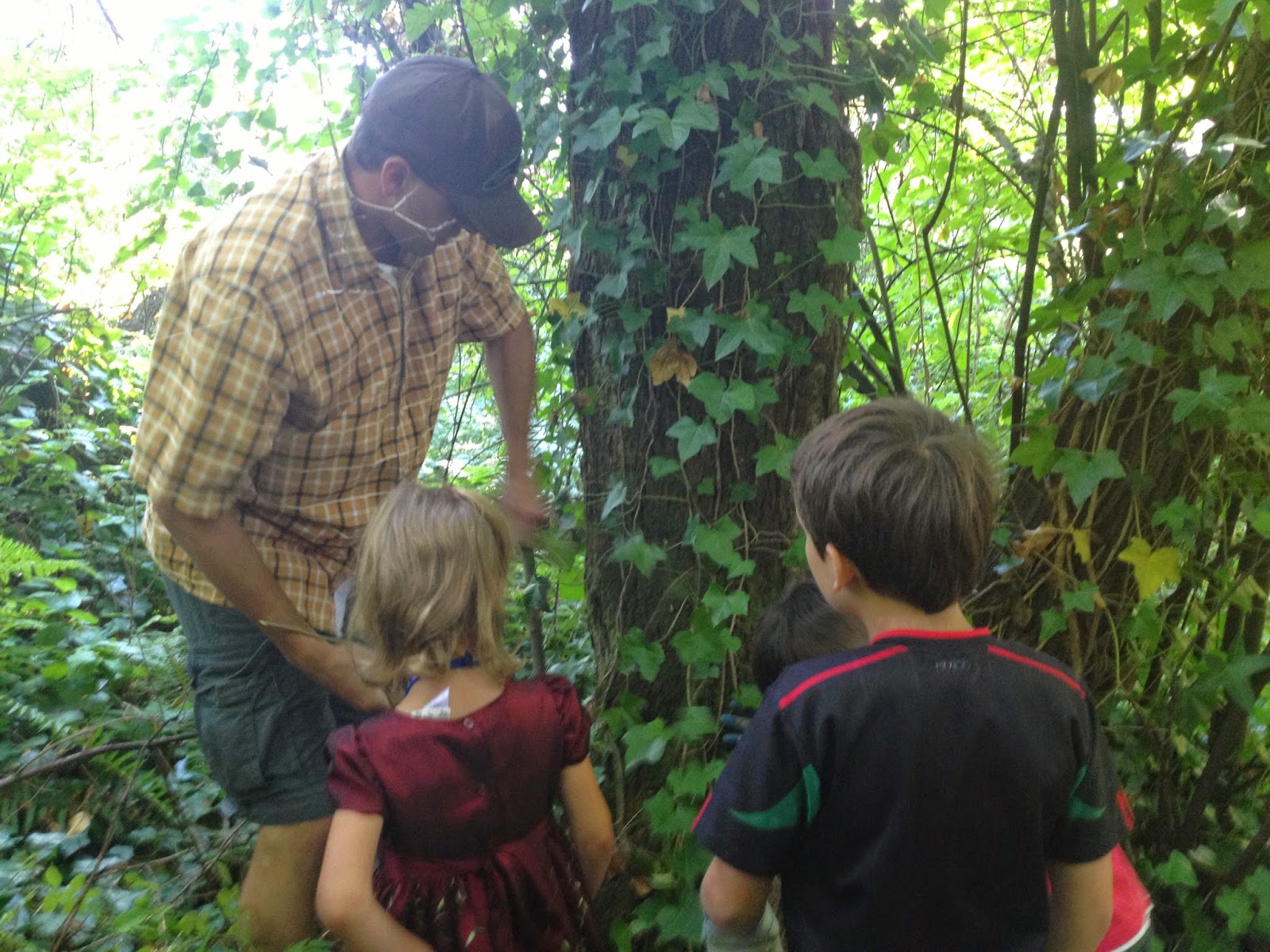Today's Helping Hands project in the Lighthouse Chapel for children and youth was to make "empty bowls" using various collage materials. These bowls will be part of an art display and fund raiser at this year's General Assembly of Unitarian Universalists. The empty bowl project raises funds to help provide food for hungry people.
 |
| Bowls in process. When dry, the balloons will be popped, and bowl-shaped artwork will remain. |
Our Open Minds team prepared a readers' theater piece about some of the roots of Unitarian Universalist beliefs. We used simple props to present each of these ideas. Thank you to Gustavo and Owen for helping to tell the story today.
 |
| Props from today's readers' theater. See below for the story of how these represent different influences in the history of Unitarian Universalism |
For a long time, people have asked themselves some important
questions about life:
How and why did life begin?
What will happen to me when I die?
How can I know what is right, what is wrong, what is good, what
is true, and what is false?
Where can I find the answers that will tell me the meaning of
life and how to live it?
How can I know what to believe?
One of the legends of the earliest Hebrews concerned a great leader named Moses. In
their early days as a people, the Jews looked to the TEN
COMMANDMENTS that had been revealed to Moses to tell them how they should live.
In time, the Jewish people wrote down their thoughts about
their history and their customs and about how they believed God
wanted them to live. Written by hand on a
double scroll, THE TORAH is read throughout the year at Jewish
services—and for Judiasm, this is the source of religious
authority.
In the first century, there lived a good Jew named JESUS of Nazareth
who studied the Torah with love and devotion. But Jesus began to
question some of the rules in the Torah and to object to them.
After his death, the early Christians looked to the example of Jesus for their answers about the meaning of life and
death, right and wrong. They took as their symbol THE CROSS, to remind themselves his ideas could not be put to death.
As the centuries passed, and Christianity grew into a major religion, the Pope in Rome became its spiritual
authority. People received God's blessing through the priests, who explained for them the
bible and offer God's blessing thorough communion. CUP.
In the sixteenth century, a monk
named Martin Luther challenged the authority of the Pope. He taught that each person should read the BIBLE for
himself, and make his own relationship with God.
By the turn of the nineteenth century, Universalism and
Unitarianism were alive and well. These two faiths grew closer and closer in beliefs until the merged
as one just over 50 years ago. Our symbol, the FLAMING CHALICE, represents ideals of both
Unitarianism and Universalism---faith, hope, love, freedom, reason, and tolerance.
In the1800s Universalist such as Hosea Ballou and Unitarians such as Theodore Parker and
Ralph Waldo Emerson spoke out for
the rights of the individual believer and against the authority of
the church.
They taught that there is truth and wisdom in the Bible, and inspiration to
be drawn from the life of Jesus. But there is also truth and wisdom
to be found in other GREAT BOOKS and other great lives, from ALL THE
RELIGIONS OF THE WORLD.
The whole panorama of NATURE, as well, has lessons for us about the
meaning of life. But the answers to the great questions are not to
be found in Bibles or birdsongs. Your answer will be found when you
look within YOURSELF. As Emerson put it, “Nothing is at last sacred but the integrity
of your own mind.”
Theodore
Parker said, “The kingdom, the power, and the glory will lie within the
human heart.”
What a tremendous affirmation! Don't ever let anyone tell you the
Unitarian Universalists don't believe in anything! What do we
believe in?
We believe in YOU!
All of you. Each of you.



























.JPG)









